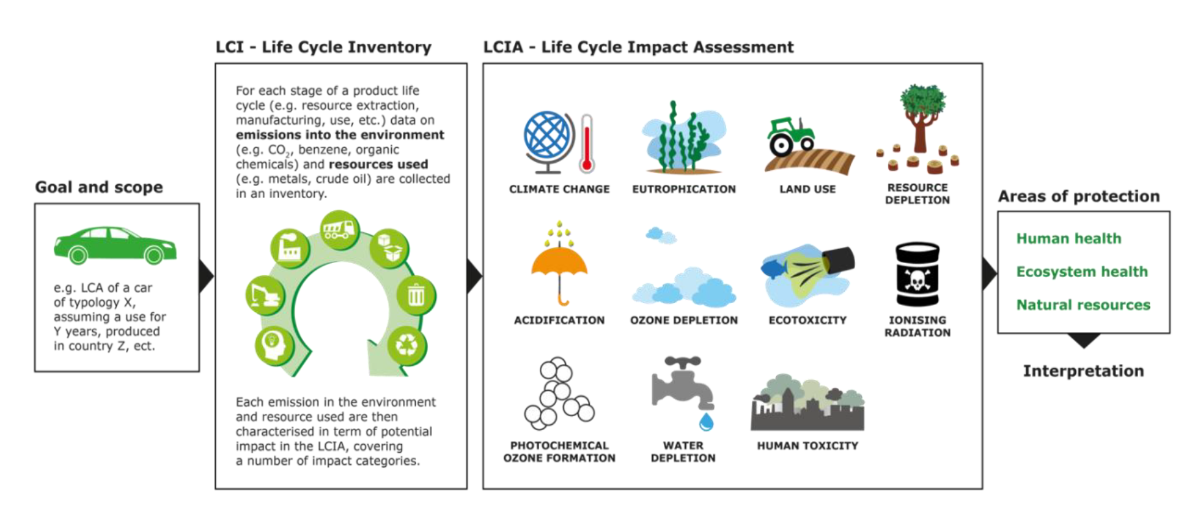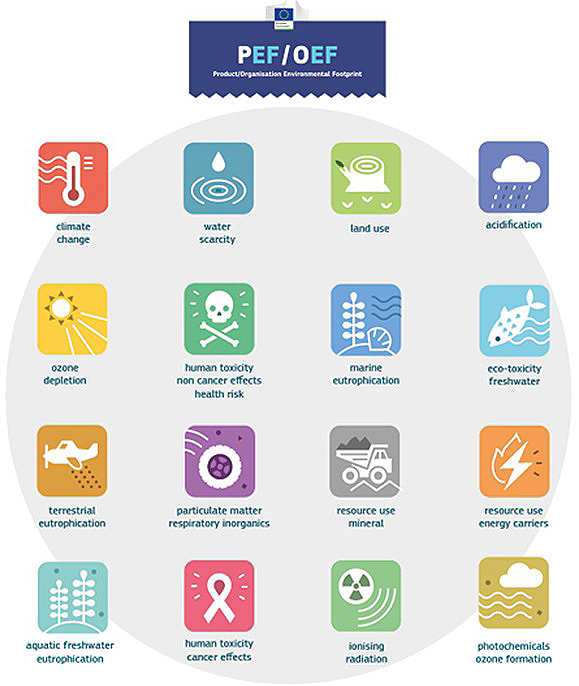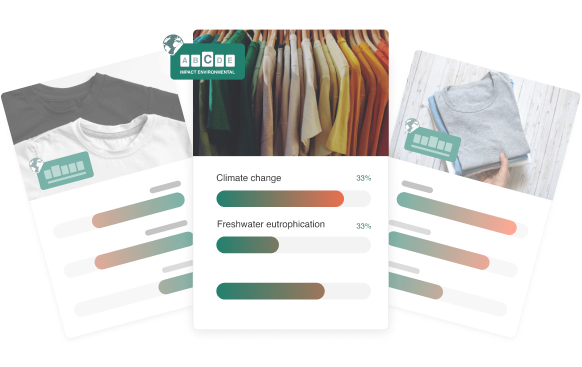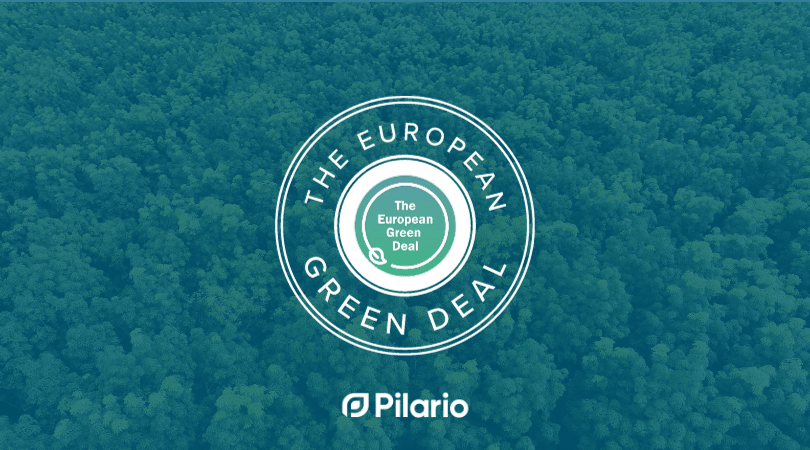08/06/2023
The EU Green Deal: Creating a Climate-Neutral Europe
Learn more about the EU Green Deal and how Pilario can help you.

7 March 2024
Environmental sustainability has become a significant concern for people, businesses, and governments globally in recent years. The increasing dangers posed by climate change, depletion of resources, and environmental harm have underscored the importance of developing comprehensive methods to lessen our environmental impact. Within the European Union (EU), this necessity has led to the establishment of various tools and frameworks designed to encourage behaviors that are sustainable in production and consumption.
A key focus of the EU’s sustainability efforts is the Product Environmental Footprint (PEF). As part of the EU’s wider commitment to a circular and green economy, the PEF was introduced to normalize the method of evaluating and reporting environmental performance across different product categories. PEF aims to provide a standardized, science-based evaluation technique, helping consumers make more informed decisions, prompting manufacturers to create products with lower environmental impacts, and aiding in the overall reduction of adverse environmental effects.
Table of Contents:
1. Understanding Product Environmental Footprint
2. The Framework of PEF
3. PEF Categories and Indicators
4. Overview of Product Environmental Footprint in the EU
5. The Advantages and Challenges of PEF
6. Conclusion: The Future of EU PEF and Environmental Sustainability in the EU
The Product Environmental Footprint (PEF) is defined as a multi-criteria measure of the environmental performance of a good or services throughout its whole lifecycle. From raw material extraction through manufacturing, distribution, use, and disposal. PEF encompasses a comprehensive assessment of a product’s environmental footprint.
The Product Environmental Footprint aims to achieve several goals :
The Product Environmental Footprint method is a game-changer in the EU’s strategy to embrace sustainability and environmental responsibility. Unlike traditional environmental assessment tools, PEF adopts a unique, standardized approach, ensuring every product’s environmental impact is measured against consistent, EU-wide criteria.
By leveraging the foundational principles of Life Cycle Assessment (LCA) PEF introduces a systematic methodology completed with specific guidelines for conducting LCAs, effectively standardizing the entire process. The core objective of PEF, is to ensure consistent and comparable communication with all stakeholders, between all products.
The Product Environmental Footprint (PEF) method breaks down the environmental impact of products into several key areas. This includes looking at how much energy and water a product uses, what kind of chemicals are involved, and how much waste it produces. The idea is to look at every stage of a product’s life, from when its materials are first taken from the earth to when the product is thrown away or recycled (cfr. From cradle to grave).
One major part of PEF is setting specific rules for different kinds of products, known as Product Environmental Footprint Category Rules (PEFCRs). These guidelines make sure that all products in the same category, like all types of shoes or all types of shampoo, are measured in the same way. This helps companies understand how to make their products better for the environment and helps consumers compare the environmental footprint of products from the same category.
Life Cycle Assessment, or LCA, is an assessment method used to figure out the environmental impacts of products. PEF builds on this principle but adds specific guidelines and standards to make the results more reliable and comparable. LCA incorporates every part of a product’s life, which is exactly what PEF does too. But PEF also involves checking these results against set standards to ensure they’re accurate and fair.
Main differences between LCA and PEF:

The Product Environmental Footprint (PEF) uses several impact categories to measure the environmental performance of products. These impact categories, sixteen in total, cover a wide range of environmental issues, helping to provide a comprehensive picture of a product’s effects on the planet. Specifically, the impact categories include acidification, climate change, freshwater ecotoxicity, eutrophication (terrestrial, marine, and freshwater), human toxicity (cancer, and non-cancer), ionising radiation, land use, ozone depletion, particulate matter, photochemical ozone formation, and resource use (fossils, and minerals and metals), as well as water use.
By evaluating these diverse areas, PEF assists companies and consumers in understanding which parts of a product’s life cycle are most damaging to the environment and where improvements are necessary.
For each impact category, PEF uses specific indicators and metrics. These are standard measurements that help compare the environmental performance of different products. For example, for the climate change category, the carbon footprint is measured in kilograms of CO2 equivalent. This allows for a direct comparison between products and helps identify which ones are more eco-friendly. These metrics are based on scientific data and methods, ensuring that the PEF provides accurate and reliable information.
Conducting a PEF study involves several key steps. First, you need to define the scope of the study, including which product or product category you’re assessing and what part of the product’s life cycle to focus on. Secondly, you collect data on all the relevant environmental impacts, using the PEF indicators and metrics. This involves actively gathering information on everything from the energy used during manufacturing to the recycling potential after the product’s use.
After collecting the data, the next step is to analyze it, to calculate the total environmental footprint of the product. This involves using standard formulas and methods to ensure the results are consistent and comparable with other products. Finally, the results are reported in a way that is clear and easy to understand, often with suggestions for how to improve the product’s environmental performance.
A crucial part of conducting a PEF study is gathering accurate and comprehensive data. This can come from a variety of sources, including direct measurements from manufacturing processes, product environmental footprint databases (e.g. Ecoinvent), and scientific studies. It’s important to use reliable and up-to-date information to ensure the PEF assessment is accurate. Sometimes, companies might need to carry out new studies or measurements to fill in gaps in the data, especially if they are assessing a new or unique product.
The methodology and calculation steps are essential for making PEF a valuable tool for reducing the environmental impact of products. By following these steps, companies can identify where they need to make changes and consumers can make more informed choices. Together, this can lead to significant improvements in environmental sustainability.

The Product Environmental Footprint (PEF) initiative is a part of the European Commission’s to integrate sustainable practices into the internal market. Launched as part of the Single Market for Green Products Initiative, EU PEF offers a standardized method for assessing and communicating the environmental performance of products and services. This approach helps mitigate the fragmentation and complexity caused by the numerous existing environmental labels and certifications, aiming instead to provide a unified methodology that is comprehensible and accessible to all stakeholders.
The PEF approach emerged from a growing need for a unified methodology to assess and compare the environmental impacts of products within the EU. In the past, companies and customers were confused by the number of many labels and systems, which made it difficult to identify really sustainable products. The introduction of PEF aims to standardize environmental information across all EU countries, providing clear, comparable, and comprehensive environmental impact data.
Enhancing the Circular Economy
PEF is a cornerstone in the EU’s Circular Economy Action Plan, which focuses on sustainable resource use and aims to keep resources in the economy for as long as possible. By providing a standardized methodology for evaluating product life cycles, EU PEF enables businesses to identify key areas for reducing resource consumption and waste production, aligning product development with circular economy principles.
Supporting the European Green Deal
The European Green Deal sets out ambitious targets for climate neutrality and sustainable growth. PEF complements these objectives by offering a framework for reducing the environmental footprint of products. By encouraging companies to adopt PEF, the EU aims to drive the market towards greener alternatives, thereby reducing greenhouse gas emissions and promoting environmental sustainability across sectors.
Informing Consumer Choices
The EU is also leveraging PEF to empower consumers to make informed decisions that align with environmental sustainability goals. By standardizing how product environmental information is presented, PEF can help reduce confusion caused by the amount of eco-labels now in use and increase consumer trust in green products. This transparency is expected to drive demand for sustainable products, further incentivizing businesses to improve their environmental performance.
Currently, PEF is in a pilot phase, with businesses and organizations across the EU testing and applying the methodology to their products. Although not yet mandatory, the European Commission provides guidance and support to encourage the adoption of PEF. This pilot phase is critical for identifying challenges and refining the approach to ensure its effectiveness and relevance across different product categories.
The EU’s long-term vision is for PEF to become a widespread standard, harmonizing environmental product information and fostering a more sustainable market. By the end of 2024, the pilot phase is expected to conclude, setting the stage for broader implementation and potentially legislative action to integrate PEF into EU market regulations more formally.
Through its role in the EU’s sustainability and environmental protection strategies, EU PEF is going to play a major role in the shift to a greener economy, facilitating more sustainable production patterns, informed consumer choices, and u

The Product Environmental Footprint (PEF) offers numerous benefits. For businesses, it provides a clear and standardized way to measure and communicate the environmental impact of their products. This can help companies identify areas for improvement, reduce costs by cutting waste, and differentiate their products in the market by highlighting their eco-friendliness.
For consumers, PEF offers a reliable and easy-to-understand way to compare products based on their environmental performance. This empowers people to make choices that are better for the planet, which can drive companies to adopt more sustainable practices.
Despite its benefits, there are challenges in implementing PEF. One major hurdle is the complexity and cost of conducting detailed environmental assessments. Small and medium-sized enterprises (SMEs) might find these requirements particularly daunting. There’s also the challenge of ensuring the accuracy and comparability of data across different products and industries.
Moreover, changing existing production processes to improve environmental performance can be costly and time-consuming. Finally, there’s the need for widespread consumer awareness and understanding of PEF labels for them to have the desired impact.
The EU utilizes the Product Environmental Footprint (PEF) as a crucial part of its environmental sustainability strategy. PEF offers a systematic way to measure how products affect the environment, encouraging businesses and consumers to prioritize sustainability. This supports the EU’s larger aim for a greener, resource-efficient economy with minimal ecological damage.
Regarding PEF’s future role, it’s poised to drive significant market changes by favoring less environmentally damaging products. If more businesses implement PEF and consumer awareness rises, we’re likely to see a move towards greener consumption habits. However, the effectiveness of PEF depends on addressing challenges like enhancing SME access and boosting public knowledge and confidence in PEF evaluations.
Life Cycle Assessment (LCA) platforms and software, like Pilario, have transformed the complex task of calculating a product’s environmental impact into a straightforward process. These innovative solutions eliminate the need for extensive LCA expertise. Making it easier for anyone to obtain the correct data and accurately assess a product’s environmental footprint, through a verified methodology.
Pilario shines in this space as a leading SaaS platform, providing instant calculations of a product’s environmental score, through an industry-compliant LCA model. It comes equipped with a comprehensive range of predefined LCA models, including those compliant with the Product Environmental Footprint Category Rules (PEFCR), like the PEFCR Beer and PEFCR Detergents. This accessibility and speed make Pilario the ideal solution for businesses seeking to efficiently evaluate their products’ environmental impacts without the need for deep technical knowledge.
In conclusion, while PEF is not without its challenges, its comprehensive approach provides a path forward for reducing the environmental impact of products and services. As it becomes more widely used and understood, PEF can play a crucial role in the EU’s efforts to achieve a sustainable future.

08/06/2023
Learn more about the EU Green Deal and how Pilario can help you.

11/08/2023
Learn about the new French environmental labeling law for textiles.

26/01/2024
Uncover the difference between LCA and carbon footprint. Embark on a journey of sustainability with our expert guide!

22/09/2023
Unlock sustainable success with LCA, PEF, and PEFCR. Understand environmental impacts, gain trust, and comply with EU standards effortlessly.